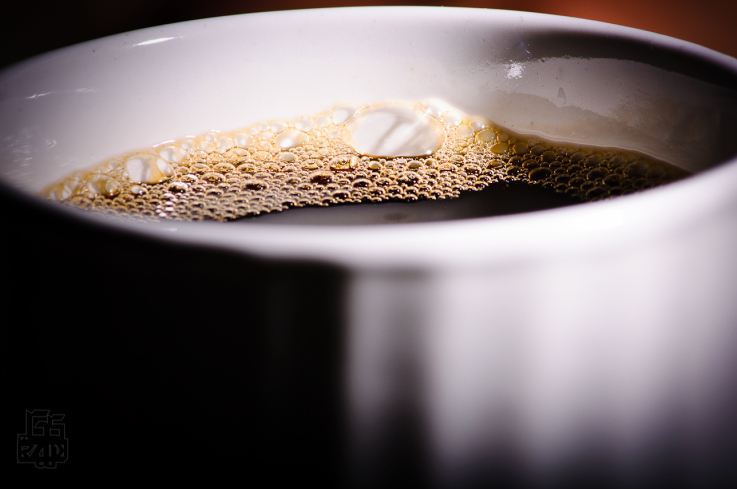Last Updated on 04/07/2011 by Gevon Servo
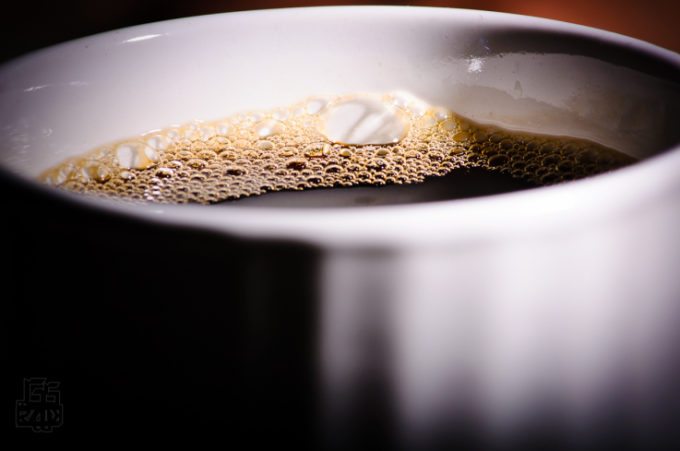
There is something I take very seriously, coffee photography. It was, actually, a major catalyst of my current photographic path. I recently did a studio shoot for KohanaCoffee at RedCedar Studios. The shoot was with my photography mentor Euan Henry, after one of his photography workshops. We went into a conversation about coffee photography while shooting and here is what we talked about.
Research

When shooting coffee, it is important to know about the product. If an image of a Cafe Romano (Regular espresso with a twist of lemon or lemon peel) or Espresso Con Panna (A shot of espresso topped with whipped cream) is requested, you need to know what it is. It is also good form to have an idea of what your client is talking about. It helps them decide on whether or not you are the correct photographer for them. There is a good book out there called God in a Cup: The Obsessive Quest for the Perfect Coffee. It will give coffee photographers a great understanding of coffee culture. The best resource is the internet. From Flickr, BlackBook, Google, and even coffee-photography.com, you can find all the reference images and coffee information one needs.
Good Coffee

One of the most important things to consider in a coffee photography shoot is the quality and freshness of the product. When coffee beans are recently roasted and properly sealed, they maintain their oily sheen. Notably that is where a good amount of the coffee flavor is contained. However, for photography’s sake, it’s a great look for the coffee beans. If you are shooting espresso images, the oil is what produces the “crema” or the light brown foam that appears on top, a great point of contrast. What I did to insure this for my shoot was to order the coffee from KohanaCoffee so it would arrive a day or two before the shoot.
If you do not have fresh coffee, you can sacrifice coffee beans for your cause. Take the coffee put it in a zip lock bag, spray a tiny amount of cooking spray into the bag, and gently shake until beans are coated and have a slight sheen. I would suggest not drinking the coffee afterwards though.
Coffee Cups

If you are going to be shooting brewed coffee in cups, make sure the cups are clean, or artistically dirty (like the coffee cup was just used). No matter if you are shooting at f/1.8 with a 50mm or f/8 with a Sigma 70-300 DG in macro mode. If coffee cups are unclean, it will actually look disgusting. When shooting coffee you want to keep color in mind. You are creating an image of the coffee not the cup. If you are shooting black coffee, use a white or lightly colored cup for contrast. If you are shooting coffee with milk or an espresso based drink like a latte or cappuccino, you can use almost any clean cup.
Brewing & Baristas
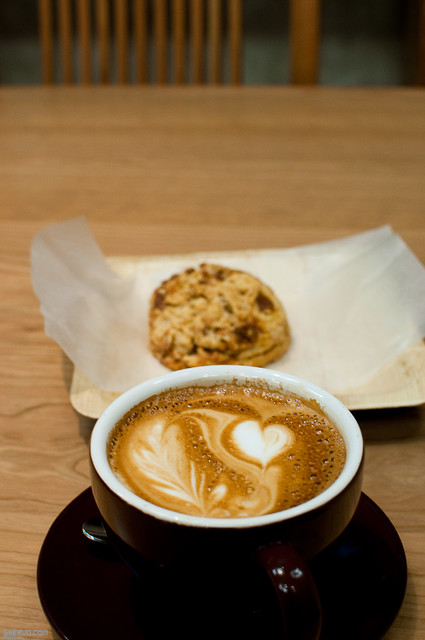
To get the best looking coffee drinks one must become a barista or become friends with one. You want the product to look the best. A true barista will work on his brewing skills like a photographer works on his image creation skills. For basic coffee images, it’s good to have a French Press of a Drip pot to make that hot steaming cup of coffee.
Background

What background you choose is very important to your image. You do not want a cluttered one. A clean background will not take away from the image. If can be in a coffee house or against a black backdrop in a studio. If you are looking to get steam in the picture, make sure the background is dark. Steam shows up better this way. You can accent the steam a little with a powered down fill flash and a diffuser like the Gary Fong Lightsphere. If you are using colored background, they can change the outcome of you image. It can be a nice effect or ruin your shot depending on how you compose things.
In studio
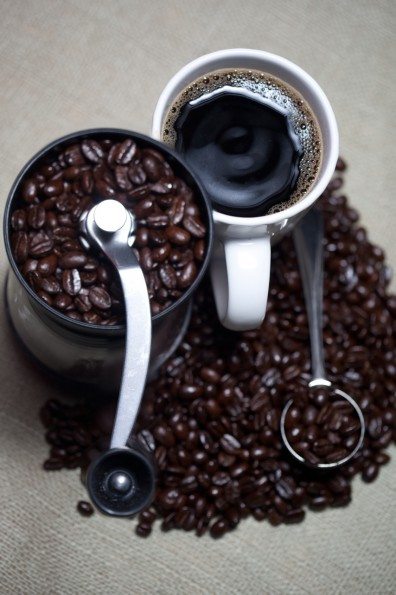
In the studio, you have a nice controlled environment, people, when and how the coffee is brewed, but things can be overdone. Strobes lights in conjunctions with Pocket Wizards work really well to light coffee images. We used Dyna-Lite M112W-PS, 1000WS System with a M1000WI Power Pack & 2-2040 Flash Heads, a honeycomb grid, and white bounce reflectors. There were two of us using the same lighting set up to take images. Longer lenses like the 85mm 1.4 to 135mm f/2 work the best in studio settings. You get to step back a little and compose your shot. With a 50mm or a 35mm, you get too on top of shots getting in the way of the light, to an extent. Good Lighting is important.
On Location
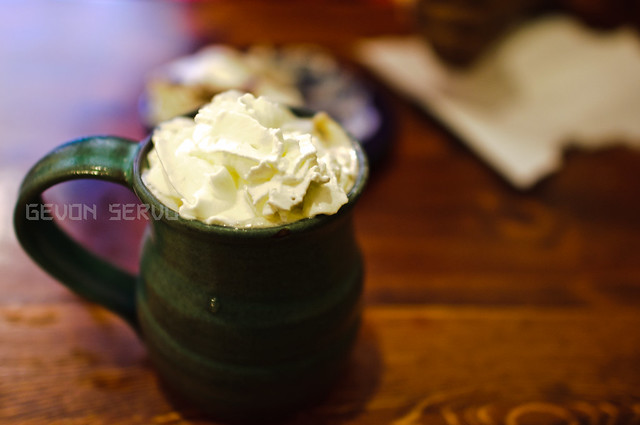
A 50mm 1.8 or a 35mm 1.8 lens is great for sitting in a coffee house and getting a shot. At a table, these lenses will give you better control over the light while not knocking anything over. You also do not have to use a flash, which is better than annoying the people around you. If you do not have enough light, raise you ISO, especially if you have a Camera like the Nikon D90 or D7000. However, if you are shooting espresso pulls, you will want to have an 85mm to a 135mm f/2. You will be out of the Barista’s way and everyone will be comfortable.
When all is said and done

Do not forget to actually sit down and have a relaxing cup of coffee at some point. That is one of the best parts of coffee photography.
Please Support The Phoblographer
We love to bring you guys the latest and greatest news and gear related stuff. However, we can’t keep doing that unless we have your continued support. If you would like to purchase any of the items mentioned, please do so by clicking our links first and then purchasing the items as we then get a small portion of the sale to help run the website.


